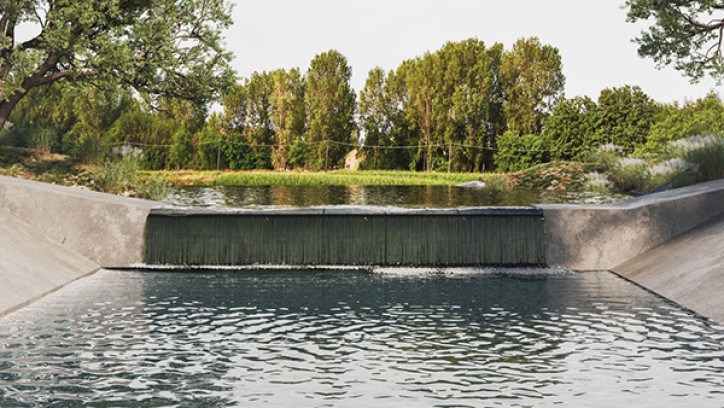11.2 Dams (excluding large dams)

Dams under 4 metres high and holding less than 20,000 cubic metres of water are exempt from building consent, but must still comply with the Building Code.
What the law says
Schedule 1 of the Building Act 2004
Exemption 22. Dams (excluding large dams)
Building work in connection with a dam that is not a large dam.
A dam is defined in section 7 of the Building Act 2004 as meaning
(a) an artificial barrier, and its appurtenant structures, that:
(i) is constructed to hold back water or other fluid under constant pressure so as to form a reservoir; and
(ii) is used for the storage, control, or diversion of water or other fluid
(b) includes a flood control dam, a natural feature that has been significantly modified to function as a dam and a canal but does not include a stop bank designed to control floodwaters.
How it works
Large dams are not covered by this exemption. A large dam is defined in section 7 of the Building Act 2004 as meaning a dam that has a height of 4 or more metres and holds 20,000 cubic metres volume of water or other fluid.
This is about the capacity of eight Olympic-sized swimming pools, or a rugby field with water approximately 3 metres deep (up to the crossbars of the goal posts).
How the height of the dam is measured differs slightly based on whether the dam is across a stream, or if the dam is a canal.
If the dam is across a stream, the height of the dam is the vertical distance from the dam crest to the natural bed of the stream at the lowest downstream outside limit of the dam.
If the dam is not a across a stream, the height of the dam is the vertical distance from the dam crest to the lowest elevation at the outside limit of the dam.
If the dam is a canal, the height of the dam is the vertical distance from the dam crest to the invert of the canal.
The dam crest is defined in section 7 of the Building Act 2004 as the uppermost surface of the dam, not taking into account any camber allowed for settlement, or any curbs, parapets, guard rails or other structures that are not part of the water-retaining structure. Note that any freeboard is part of the water-retaining structure.
What is exempt
- A farmer constructs a water reservoir for crop irrigation. The height of the dam is 3.5 metres and it retains a depth of 2.5 metres over an area of 5,000 square metres (approximately 12,500 cubic metres of water). This is exempt work as the height of the dam is less than 4 metres and the volume of the water that is held back is less than 20,000 cubic metres.
What needs consent
- The height of a proposed dam on a river is 20 metres and it will hold back more than 250,000 cubic metres of water. This work will require a building consent because the dam height is greater than 4 metres and the reservoir volume is greater than 20,000 cubic metres.